Different topologies for an org chart, wrong answers only
Monday, March 27, 2023
Traditionally, an org chart is represented as a tree. You start at the top with the root of the tree, probably the CEO. And then everything comes down from there hierarchically.
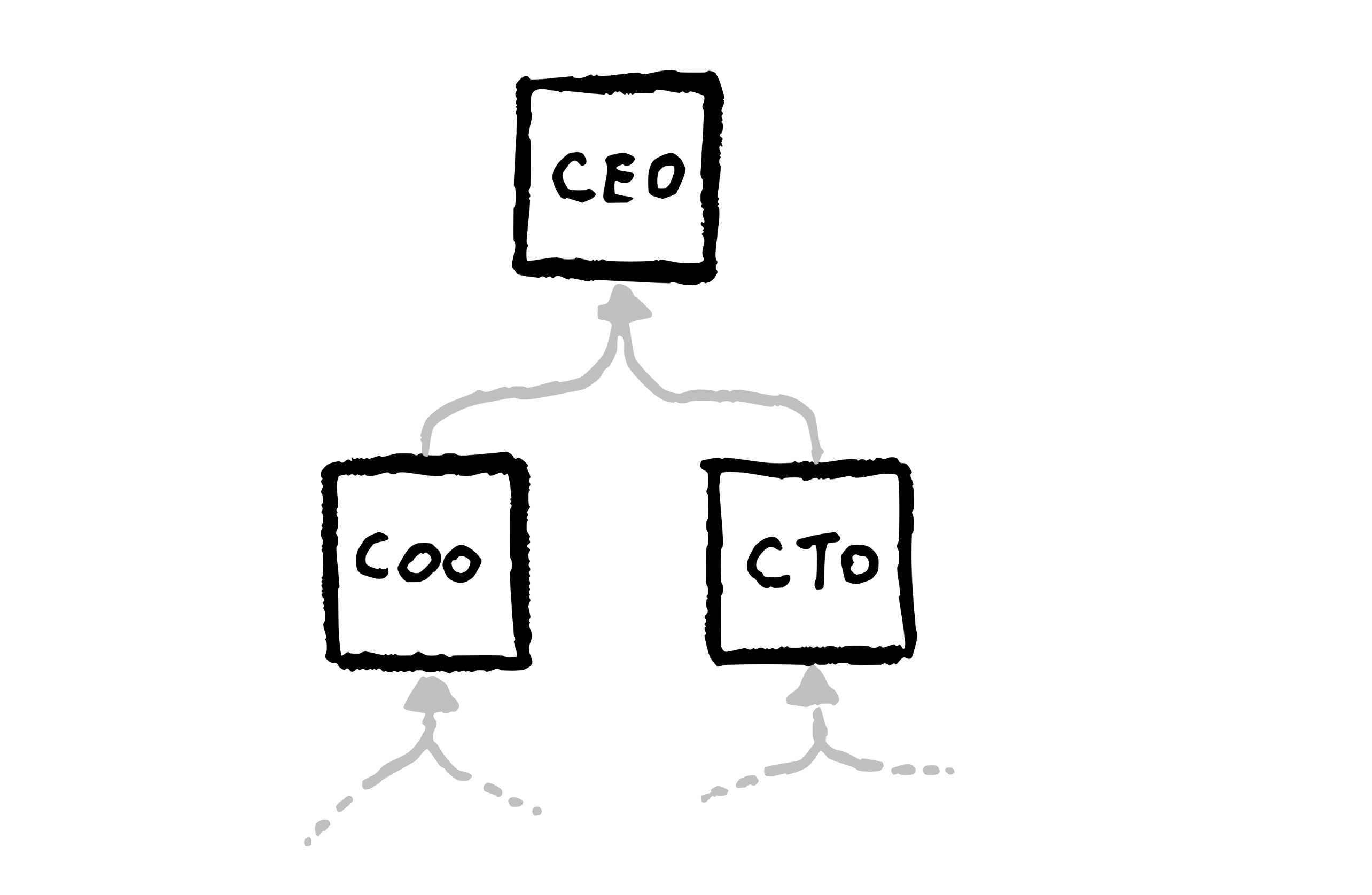
It doesn't have to be that way, though! We can imagine other topologies for companies which would work differently. Let's challenge assumptions one by one and see where we end up.
First, we have one person in charge? Clearly not, at least in some of the organizations I've worked with[1]! If you have multiple leaders at the top who are not accountable to each other, then you can end up with a forest instead of a tree. This can happen in startups where you have multiple founders with different priorities, not reporting to each other, who each head up a different tree in this little forest.
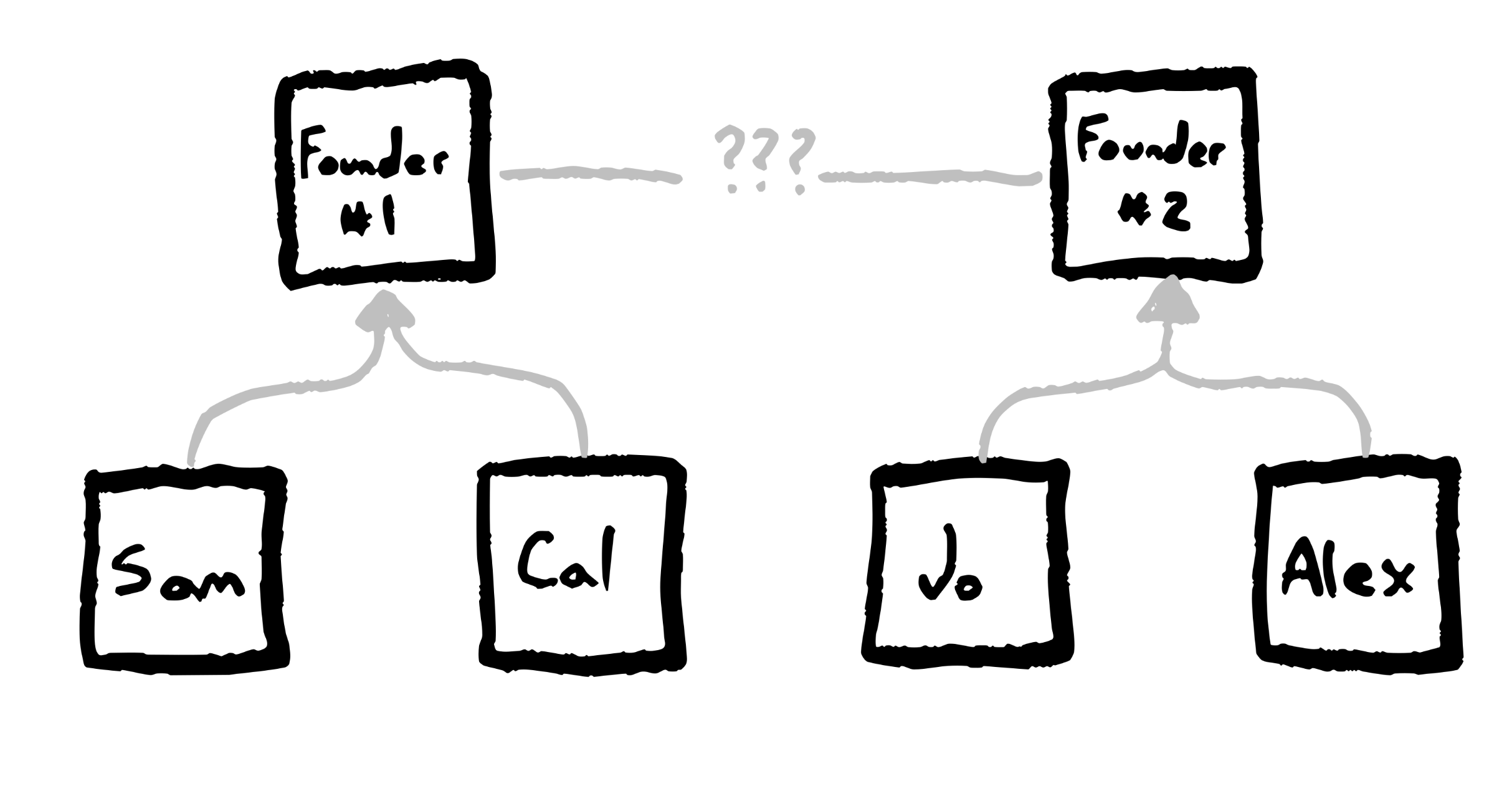
That can lead to some fun dysfunction since you have multiple distinct organizations now, which somehow are supposed to work together toward common good.
Another assumption here is that you have one boss. That's common, but sometimes you have "dual reporting" where you have multiple bosses. This happens in matrix structures. But it can also happen from just plain old dysfunction! And now the org chart forms a directed acyclic graph, or a forest of such.
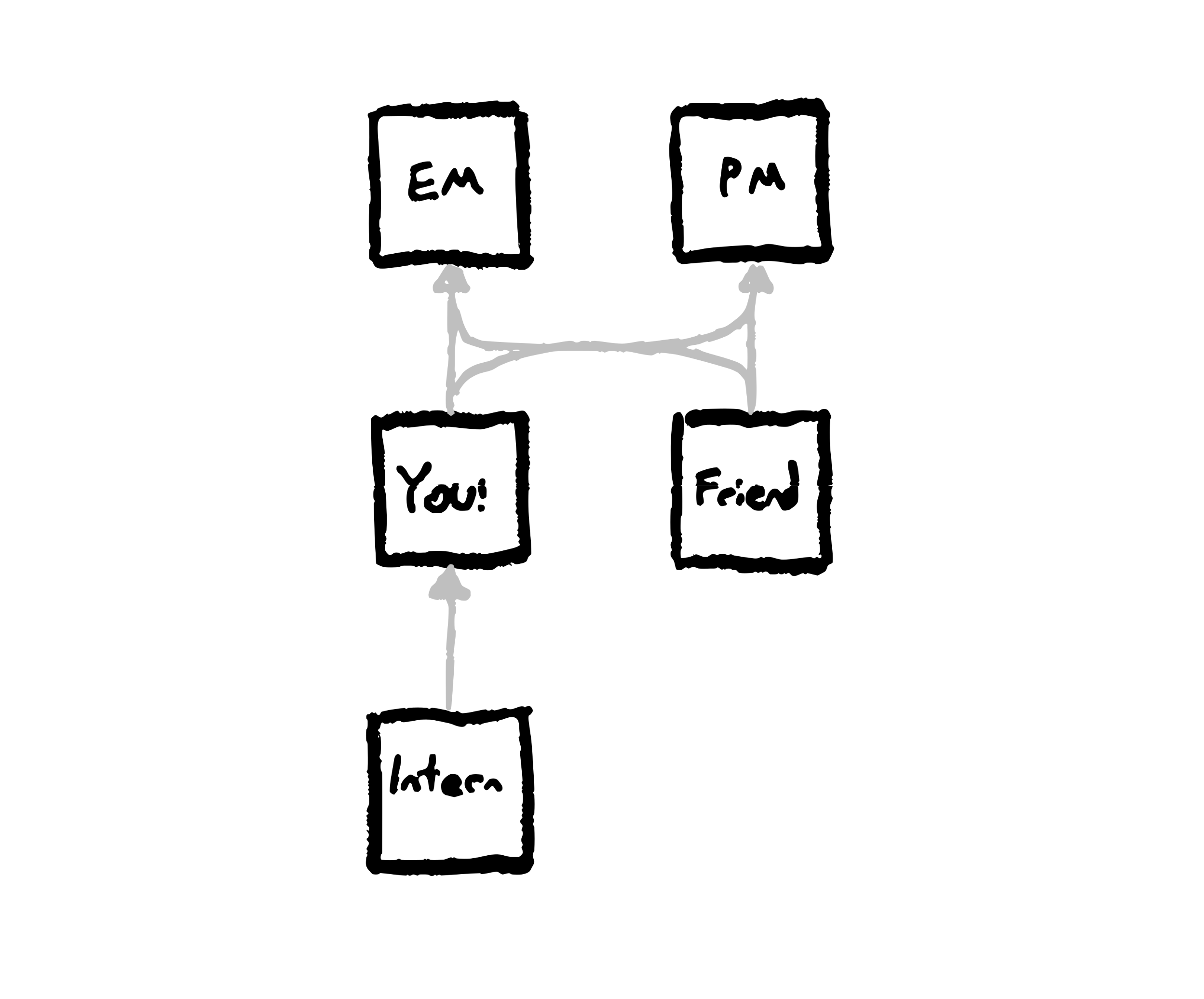
Wait, we just made another assumption. It's a directed acyclic graph? Okay, what if we did introduce a cycle? Now you have a plain old graph.
This could happen if one of the founders of the company controls enough voting shares to control the board. Then you have a cycle: the founders report to the board, but the board reports to that founder, who themselves reports to the board, etc. This could also happen in a very totally normal situation, like if you hire an intern and then have the CTO report to that intern.
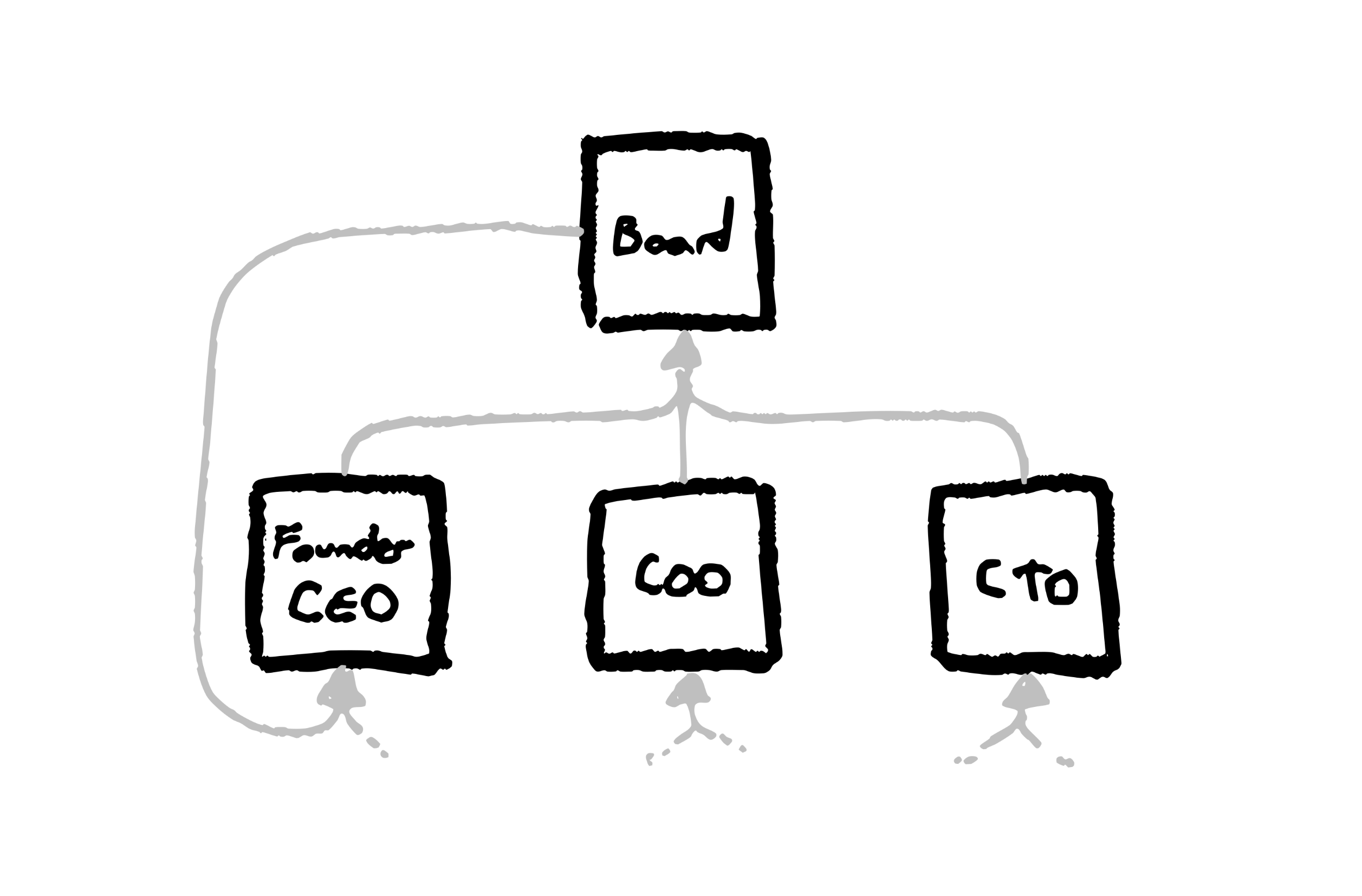
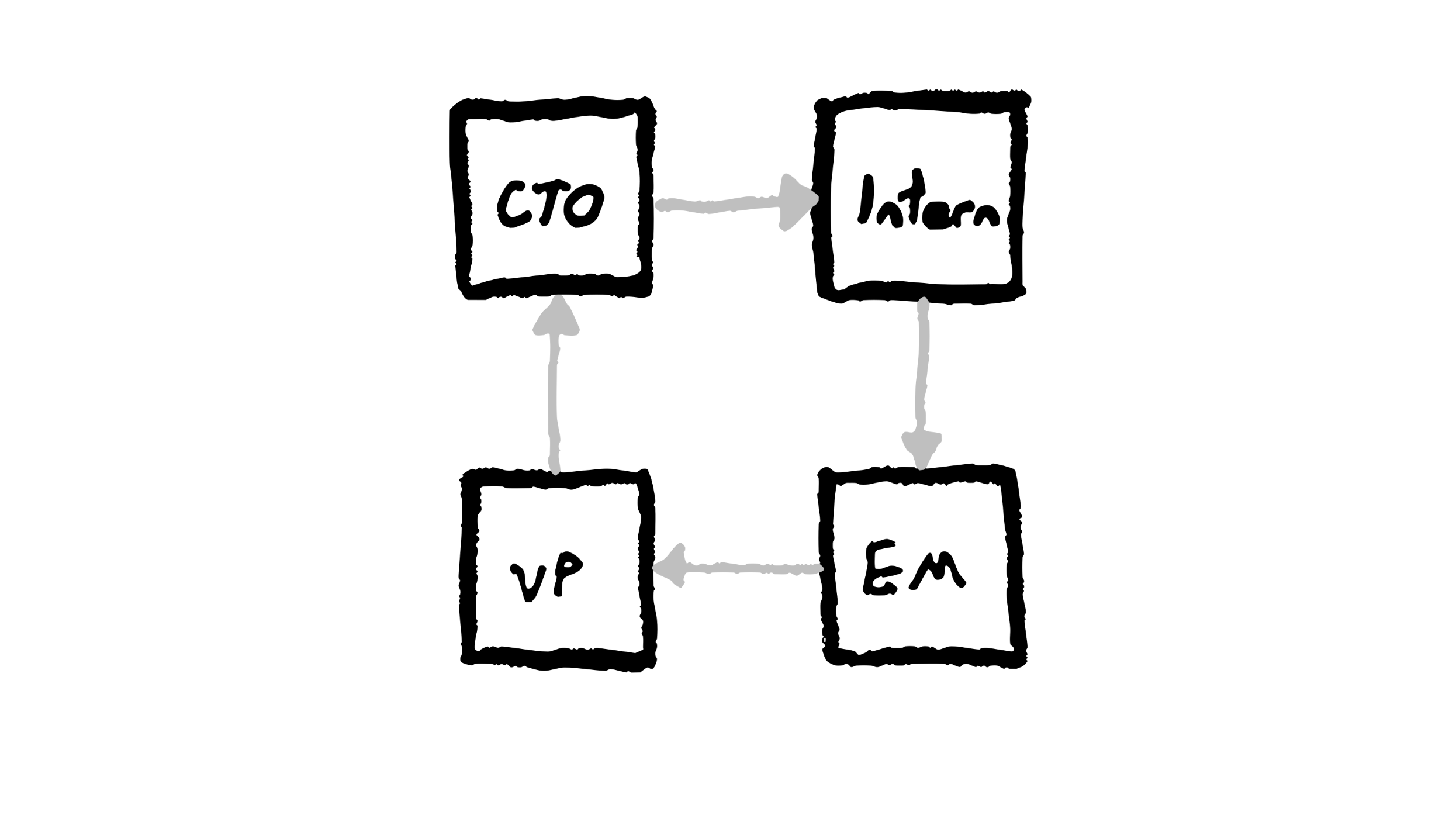
Okay, another assumption that has just gone unstated in here. Every manager has multiple direct reports. We all know that there is a such thing as too many direct reports, because beyond a certain point you don't have the time or energy to help all of your reports. Let's go in the other direction: each manager manages one direct report. Now we've made a linked list for our org chart!

But okay, there's still a hierarchy. This isn't a radical departure! No, but wait, there's a twist: It's a doubly linked list. Everyone has one "next" direct report and a "previous" direct report (unless they're at the end of the list). Functionally, you're now your boss's boss, so that'll teach you to give me a bad performance review.
You can't fire me, you're fired!
Each person is, transitively, each other person's boss. This keeps the power balance, and there are no problems that could ever arise from this. Only rainbows and unicorns.

Or we can just lean into it and make it explicit. You want to be everyone's boss? You've got it! And you've also now got everyone as your boss! We make all these connections explicit, and form a complete graph.
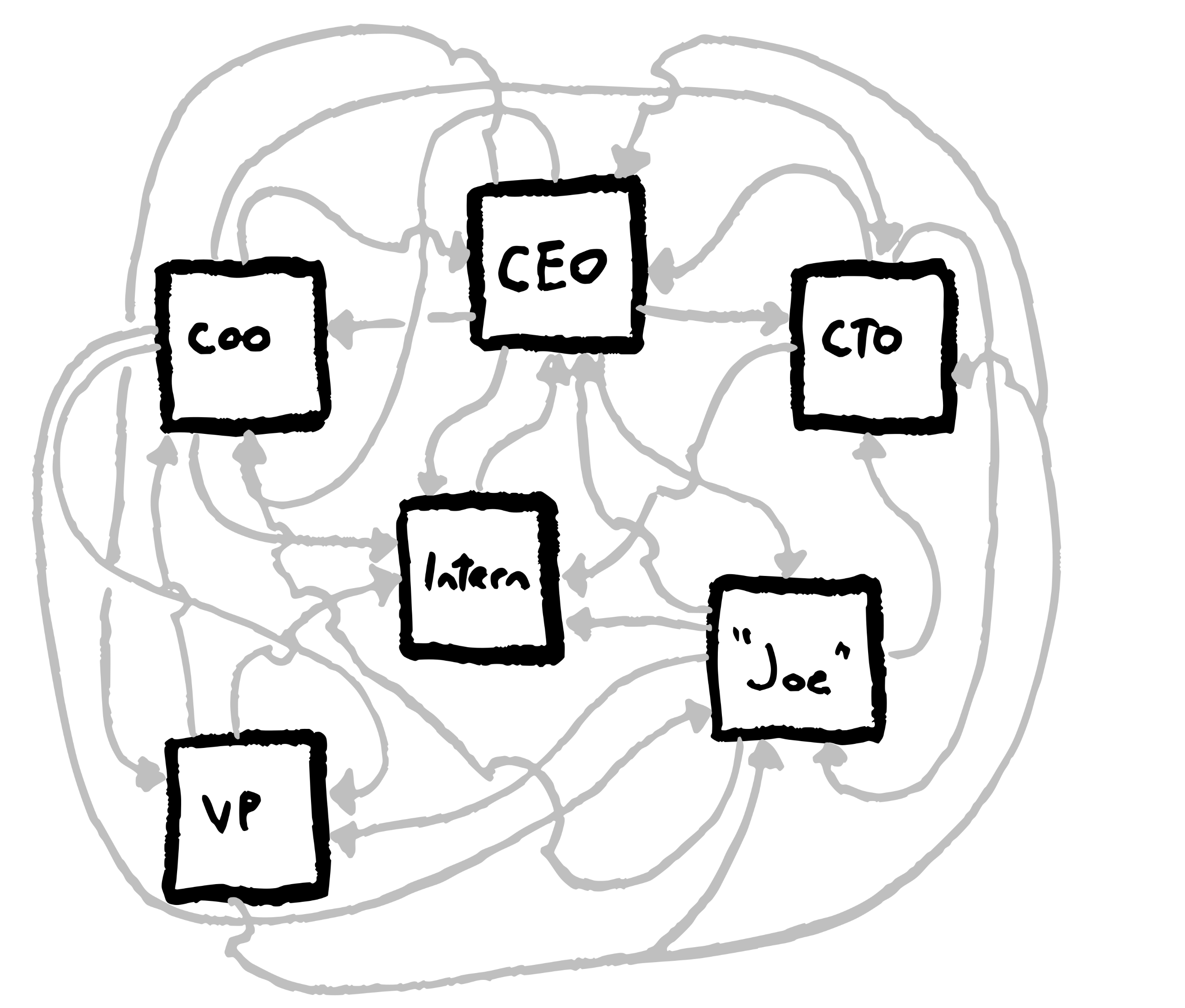
Oh no, chaos! Who could have predicted!
I guess the traditional organization design has a reason behind it. There are legitimate quibbles, and I think there are some interesting ideas. In particular, employee-owned cooperatives give some measure of "the CEO reports to the intern," and I'm curious if there are any other ideas that change the org chart in productive ways. Anyone have right answers here?
-
In fact, here's the actual-factual org chart for the League of Nations. It has a few trees, some disconnected wholly and some which have dual-reporting shared committees. ↩
Please share this post, and subscribe to the newsletter or RSS feed. You can email my personal email with any comments or questions.
If you're looking to grow more effective as a software engineer, please consider my coaching services.
Want to become a better programmer?
Join the Recurse Center!
Want to hire great programmers?
Hire via Recurse Center!